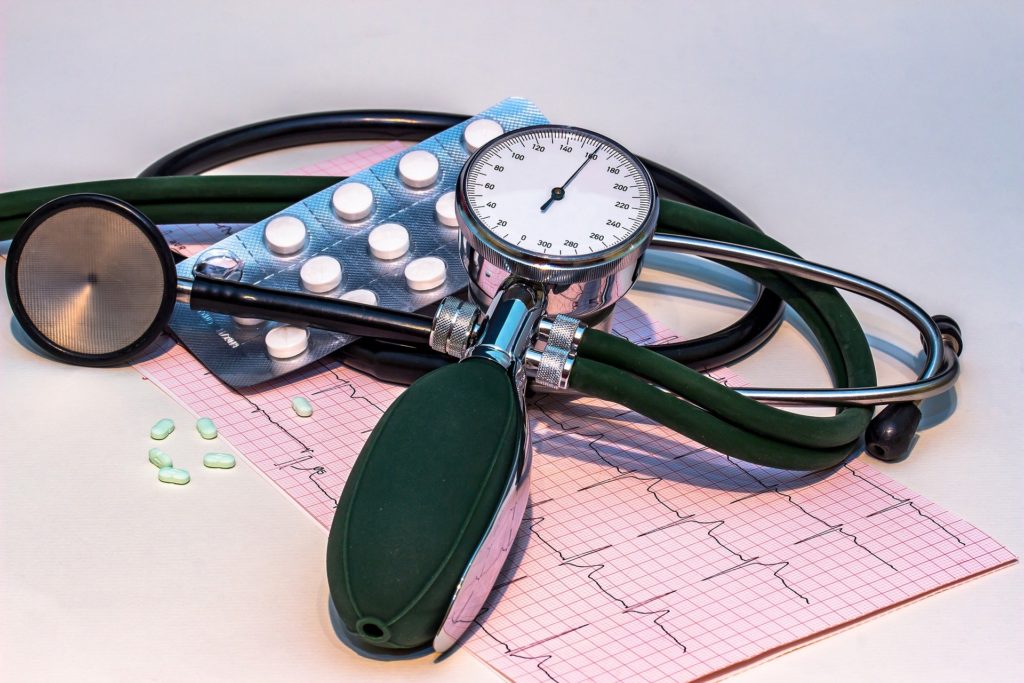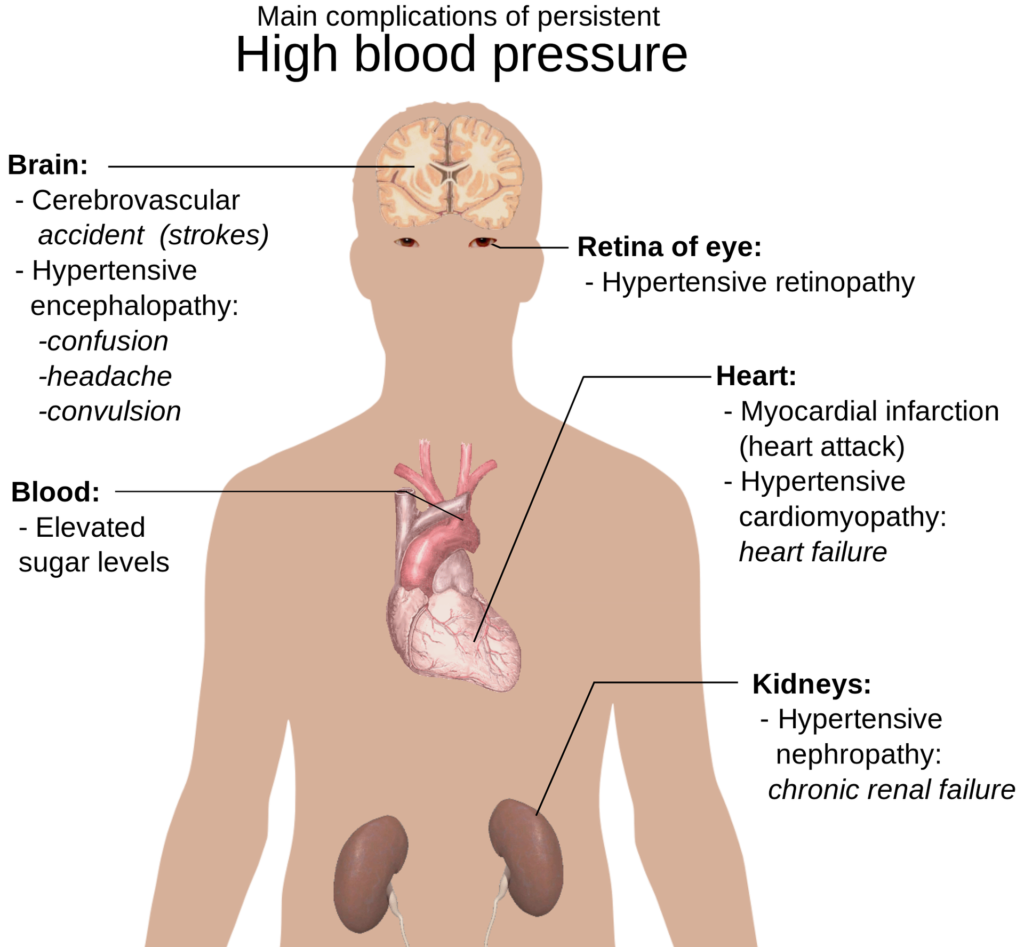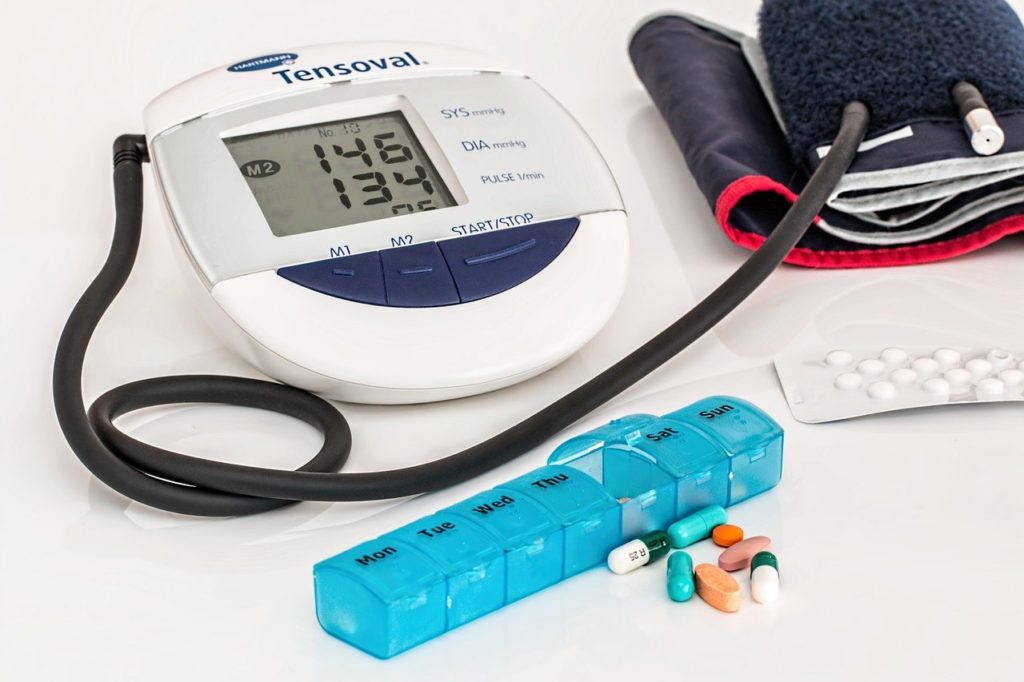By Cindy Thomas
 High blood pressure can adversely affect your organs, especially your heart and brain. It can lead to heart failure, kidney damage, and strokes. Some of the more common symptoms are headaches, dizziness, and chest pain caused by a lack of oxygen. High blood pressure is diagnosed using an electrocardiogram or a blood pressure monitor.
High blood pressure can adversely affect your organs, especially your heart and brain. It can lead to heart failure, kidney damage, and strokes. Some of the more common symptoms are headaches, dizziness, and chest pain caused by a lack of oxygen. High blood pressure is diagnosed using an electrocardiogram or a blood pressure monitor.
Even if you’re a woman, you have just as great a chance of developing high blood pressure as men. The average woman with normal blood pressure has a risk 1.5 times greater than a man’s. High blood pressure doesn’t discriminate, affecting both low and high risk individuals equally.
Smoking, alcohol consumption and obesity all contribute to hypertension. Statistics show that women are more likely to develop high blood pressure in midlife, although men are more likely to develop it later in life (in their thirties or older).
[bctt tweet=”5 Things Women Can Do to Lower Blood Pressure” username=”thewahmagazine”]
Many factors could be contributing to your elevated blood pressure, including genetics, stress and lifestyle modifications. You can’t change some things when it comes to high blood pressure, but you can control the things you can change. Some women get high blood pressure as they age, but others don’t.
Though the risk of high blood pressure in women increases as they age, it can be reversed. That’s why many women worry about their blood pressure when they hit middle age. Every year you might see your doctor for a checkup, but at 62 or 70 there’s no reason to actually go to the doctor unless something is wrong.
You also can’t change your genetic markers , but you can lower your chance of getting high blood pressure by managing your weight, quitting smoking, and managing stress. Many women get high blood pressure in their forties or fifties, so it’s vital to take preventative measures now in order to avoid it later on.
If you have a history of hypertension in your family, you may suffer from it in your later years as well. It’s best to start preventative steps early so you don’t get as badly affected when high blood pressure starts to rear its ugly head.
Having regular check-ups is very important. This is especially true if you have a family history of hypertension or if you are over the age of 45. Even if no one in your family has high blood pressure, it’s important to be aware of your risk factors and begin taking preventative measures early on in life.

Here are five ways to help lower blood pressure:
1. First, you should have healthy eating habits in place. Eating a healthy diet is crucial to lowering blood pressure. Eating fresh fruits, vegetables, and whole grains keeps your food intake in top shape.
Some foods will raise your blood pressure because they contain a lot of salt. To help lower blood pressure, cut out all or at least most of processed foods such as lunch meat, can soup, etc. Check those nutrition labels before buying – chances are you’ll be shocked at how much salt you’ve been putting into your body!
Consider cutting back on alcohol and caffeine, both of which can raise blood pressure if not consumed in moderation. You should also cut out or reduce your use of nicotine products.
2. It’s important to maintain a healthy body weight . Overweight and obese individuals are three times more likely to get high blood pressure. Being overweight puts strain on your heart, and the more weight you’re carrying around, the harder your heart has to work to pump blood through your circulatory system.
For a woman, a healthy body weight is one that allows you to maintain a healthy heart rate while walking. If you can’t maintain a healthy heartbeat, it’s time to do something about your weight. If you are significantly overweight and feel overwhelmed at the thought of losing weight, consider setting a small weight loss goal when you first start and go from there. Also consider consulting a doctor or nutritionist for help.
3. Exercise can lower your blood pressure and improve oxygenation throughout your entire body. If you have high blood pressure, it’s very important to exercise because it keeps the blood flowing through your cardiovascular system. You don’t have to become an athlete or join a gym. Walking around the neighborhood, going for a quick walk during lunch breaks, and doing weight exercises at home are all great ways to increase the amount of oxygen your heart can pump through your body.
Even if you absolutely hate the thought of exercise, there are a number of ways you can make it fun. If you or someone you know is interested in working out at home, look for books and online articles on how to do so. You can even consider joining a local dance class. Many of these are geared toward women and have fun music and instructors who keep the class interesting.
If you like swimming, take advantage of the pool in your area. Swimming is a low-impact and fun way to get the benefits of exercise while actually enjoying yourself. Plus, it’s great for your cardiovascular health.
Engaging in games like badminton, tennis, and ping pong are also great ways to get exercise. Think of something you enjoy and do it – even if you’ve never done it before.

4. Lower your blood pressure by lowering your level of stress. High stress at home or work can cause your blood pressure to skyrocket. Chronic worrying can raise stress levels. Stress causes the body to produce excess amounts of adrenaline, which makes the heart pump faster and harder. When you have a body that’s constantly pumping at a high level, it can lead to high blood pressure.
There are some stressful things you can change to lower your stress level and thereby lower your blood pressure. Setting aside 30 minutes each day where you can relax can help. Try a relaxing bath or a peaceful walk. You can also make time for hobbies you enjoy, like sewing or reading. A change of scenery (a stroll by the beach), an exercise class, or spending some time with family and friends can help to clear your mind and lower stress levels.
Learn to manage things that can’t be changed that cause you stress. Having a good support system of family and friends who are supportive of you can help.
5. If you’re eating healthy, getting plenty of exercise, controlling the stress levels, and still you have high blood pressure, then it’s time to see your doctor about prescription medication to help lower blood pressure and keep blood pressure under control. Many medications come in the form of small tablets or capsules. If you have difficulty swallowing pills, you can ask for a liquid form of your medication.
Depending on your particular medical needs, you might take a tiny pill every morning, or you might need more medication throughout the day. It’s important to follow your doctor’s instructions exactly. This will help ensure the effectiveness of the blood pressure medication and keep your blood pressure under control.
Follow a healthy diet and exercise plan so that you’ll lose any extra weight but if your blood pressure is not where it should be, do contact your doctor for help on prescription medication that will help lower blood pressure levels and lower your risk of heart disease and stroke.

